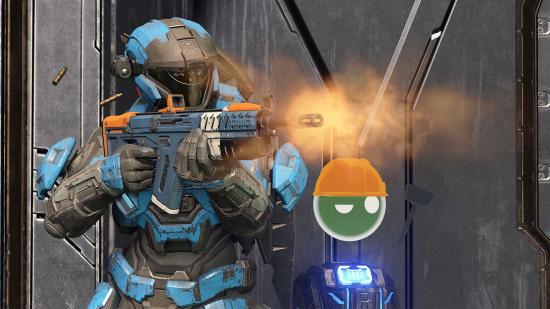Halo Infinite’s multiplayer has received a lot of criticism. The amount of XP players can earn in-game, the difficulty of the challenges, and even the discovery of a possible hidden ranked MMR that tracks your performance across all game modes, including social matchmaking playlists, have all been points of discussion in recent weeks. So, to tackle the discourse, 343 Industries has taken to a blog post to enlighten Halo fans on how the team is tackling these problems.
The issue that gets voiced most is players being shot from around corners, the post says, which is largely due to latency compensation. Games are matchmade on a server that physically lives somewhere in the world. Depending on a player’s real distance from that server, the game has to compensate for this by averaging out latency so that no one Spartan has an unfair advantage.
“There are multiple ways that you can solve the problem of latency compensation, but in Halo we choose to favour the shooter. Practically, this means that whatever happened on the shooter’s screen the server endeavours to honour. That means whenever a player sees themselves hitting a target, our system does its best to give them the hit on the server,” 343 says.
Practically speaking, then, this allows for something called ‘peeker’s advantage’ – when a player strafes out fast from a corner in a first-person shooter sees their enemy before they themselves are even rendered on their opponent’s screen. This is something that has long plagued games like CS:GO and Valorant.
The blog post goes into more scientific detail about how the latency compensation in Halo Infinite is calculated, but simply put it’s related to server tick rate – how fast the server can take in everything going on in-game and refresh that across all player screens per second. 343 has been trying to mitigate this by matchmaking players who live closer together to minimise these effects, but “it hasn’t been performing as well as we’d planned.”
In an FAQ in the blog post, 343 reveals the server tick rates for Halo Infinite’s multiplayer, which is 60hz for 4v4 matches and 30hz for Big Team Battle and the upcoming campaign co-op. To put this into perspective, CS:GO has long been critiqued for only providing 64hz and not 128hz like is used in professional play.
The company is also aware of other issues reported by players such as desyncing, missing collision detection, and poor melee and shot registration. “We should have the fix deployed in upcoming builds. Keep an eye on the patch notes for more info,” 343 says.
Why not have a look at the Halo Infinite ranks, rules, and playlists while you’re here. That way you can brush up before future updates, and so you know just where you sit compared to others on the CSR spectrum.
